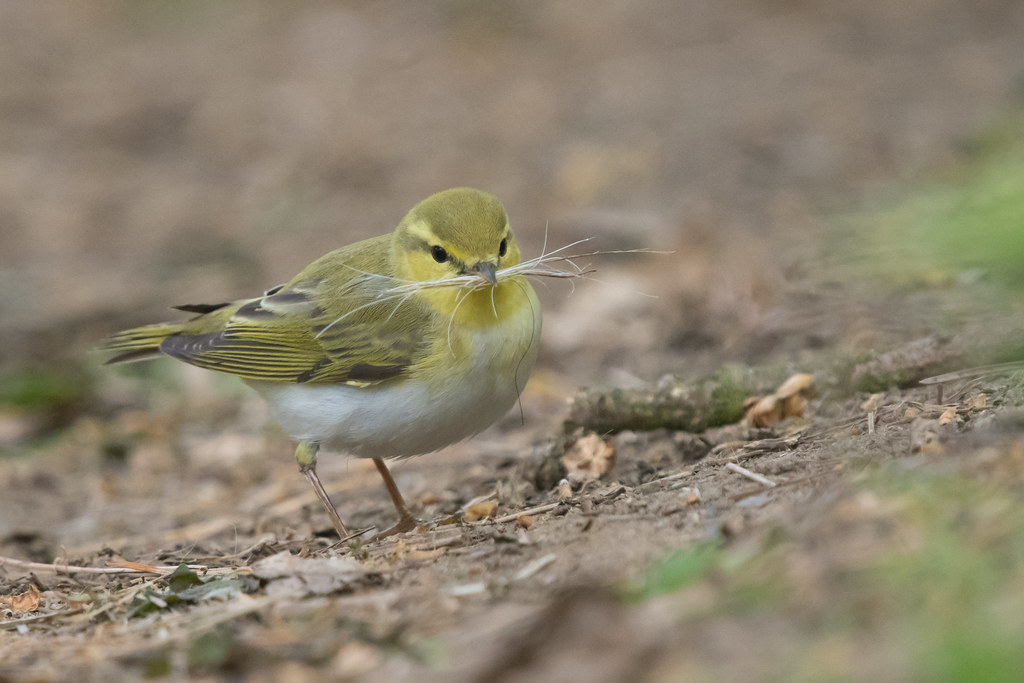
Tim writes: Wood Warbler is by far the rarest and most beautiful of the three Phylloscopus warblers that breed in Britain. Willow Warbler has about 2.2 million pairs, while Chiffchaff has about 1.1 million, whereas Wood Warbler only has around 6000 pairs, and that is likely to have fallen as the species is in steep decline. They are thinly distributed in upland woodlands throughout Britain, with a few isolated pockets in the lowlands, such as the New Forest and Thames Basin heathlands. Wood Warblers are more beautifully marked than their congeners with a lemon wash on the face and throat contrasting with silky white underparts. The upperparts are also a cleaner, lime green, unlike the sullied brownish green of Chiffchaff and Willow Warbler.
Most Wood Warbler photographs are of singing males as that is when they are relatively easy to capture, but I managed to capture this female gathering nesting material from a woodland path. The sexes are similar but I know this is the female as only she builds the nest. Also her mate was still singing nearby. The most familiar song of Wood Warbler is an accelerating trill though this is often interspersed by a soft, plaintive “puu, puu, puu” usually repeated five or more times. I have seen the male sing both songs but this day I saw the female give the softer call, again repeated a number of times. I even saw her sing while she had a beakful of nesting material.
Wood Warbler was separated from Willow Warbler by Gilbert White in 1768. In a letter to Thomas Pennant he described how by listening to their songs, he had found there are three species of Willow-Wren. He called Wood Warbler the Large Shivering Willow Wren. This perfectly describes the accelerating trill of a song which culminates with the bird vigorously shivering its body. Its scientific name Phylloscopus means leaf-gleaner, while a sibilatrix is a whistler, from the song.
[registration_form]
Another lovely blog about a well loved British bird, if a little harsh on the chiffchaff and my favourite warbler, the willow warbler.
Many people, with Wood Warbler in mind, head for the Sessile Oak woods , or sparsely vegetated Beech plantings of the uplands.
However in the last few years, annually,out of six or seven sites with singing males, only one or two have fitted this description. The majority have been in plantings of mixed hard / soft wood,
especially where Scots Pine are included